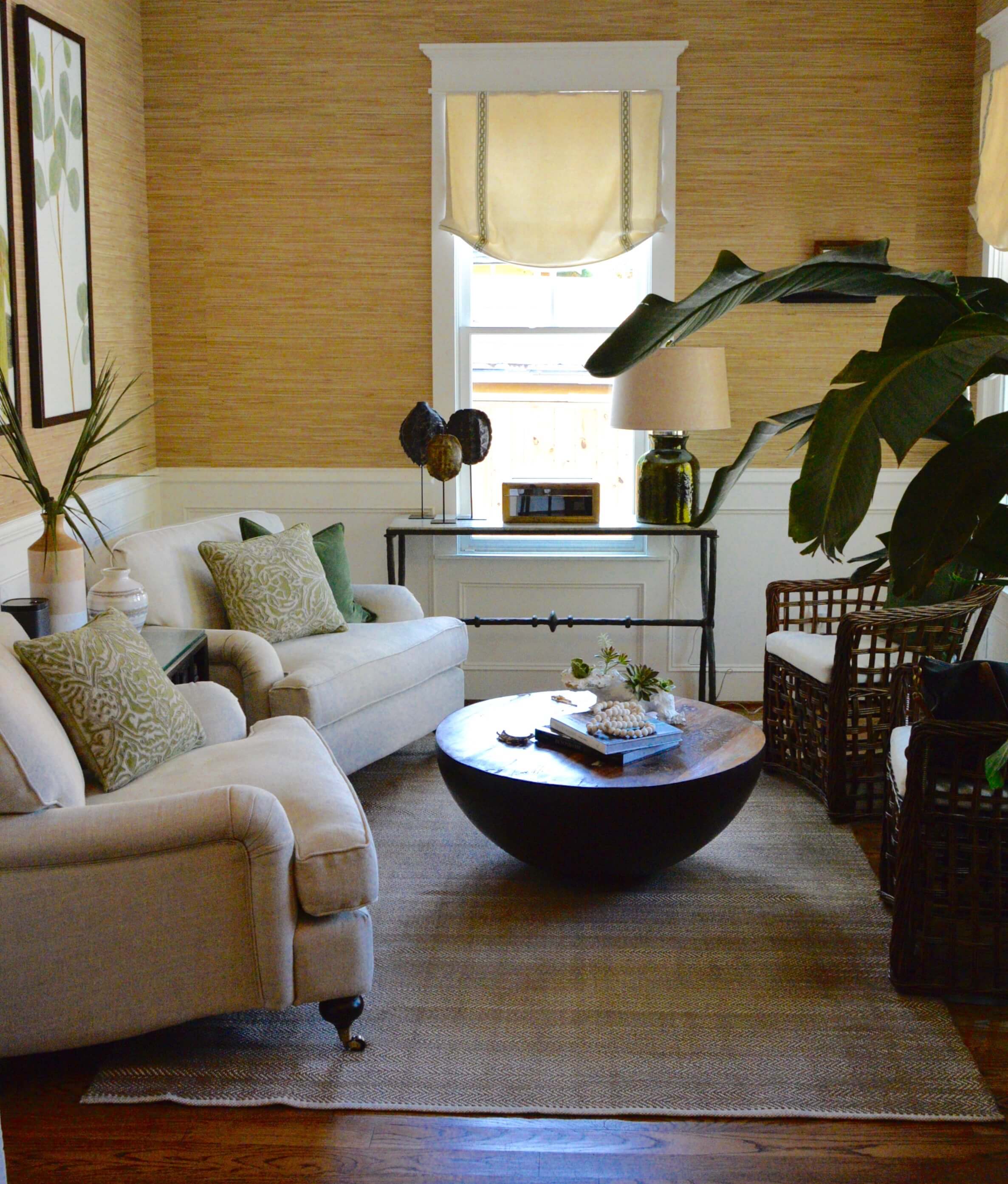Table Of Content

Remove any hardware from the clock and add shelves, as seen on Eclectic Twist. The placement for this timepiece is endless, and it can complement any room that needs an ornate storage piece. The combination of nostalgic finds, wall creations, crystal chandeliers, and upholstered furniture will create the ultimate American Colonial style in your home.
Example of a Colonial-Revival Style Home
Decorative objects are an excellent way to showcase your colonial heritage in a modern context. Look for antique vases, brass candlesticks, or vintage ceramics that evoke the charm of the past. Arrange these objects on shelves, mantels, or coffee tables to add a touch of nostalgia and personality to your space. Opt for classic, traditional artwork, such as oil paintings, landscapes, or portraits, to complement the overall aesthetic. You can also incorporate antique maps, botanical prints, or vintage photographs for added visual interest. Mixing Colonial design with other styles, such as modern or farmhouse, can create a unique and personalized look.
British Colonial
This method of choosing keeps the color in the same family of shades but mutes the depth. Colonial-era decor pieces often replicated natural elements and complexions, so endeavor to maintain simplicity and prevent oversaturating the environment with deep, dark shades. These types of dwellings often have square or rectangular windows, low ceilings, and a simple layout. Separate rooms are common in the interior as opposed to the open layouts we see in modern houses. However, there are plenty of ways to incorporate colonial-style decor into any past, present, or future home. One could consider the style of furniture, type of flooring, color palette, and scaled-down aesthetic as starting points to achieving the ultimate colonial-style decor in your home.
New Colonial: Adding a Modern Twist to a Classic
These colors reflect the natural hues found in the surrounding landscape and create a cozy and inviting atmosphere. As the European settlers established colonies in different parts of the world, they adapted their design styles to suit the local climate and available resources. For example, in the Caribbean, colonial homes often featured wide verandas and louvered shutters to maximize airflow and provide shade from the tropical sun.
"The space is light-filled and serene." The challenge in creating the home office was the size. It's a 5'x7' small square shape right off the entryway and kitchen so there wasn’t much room to work with. "We used a drafting table so that the client could have ample space but angled the desk to give the illusion of more space when not in use," says Denham. "We also made custom long oak floating shelves that almost run the full width of the room to visually lengthen the space and offer storage for books." An upstairs bedroom has white walls, classic windows, and is furnished with antiques that complement the traditional style of the home. 'We love using vintage lighting and flatweave carpets as a starting point.
Glendale mansion showcases Southern Colonial exterior, maximalist interior design - KTVI Fox 2 St. Louis
Glendale mansion showcases Southern Colonial exterior, maximalist interior design.
Posted: Mon, 17 Jul 2023 07:00:00 GMT [source]
The style is simple and clean-lined, with a rectangular silhouette, with a steep roof and a central door. Georgian-style houses are known for being perfect examples of symmetry, using the golden ratio as their guiding architectural element. They are usually square or rectangular, with at least two chimneys, one on on each side of the roof. The front door is perfectly centered at the front of the house and acts as the dividing line between two symmetrical halves.
What are the key elements of modern colonial interior design?
Sacha Strebe is a former editorial director for MyDomaine and has been writing about home and interior design for eight years. Newer construction homes in suburban neighborhoods are often called "Neo-Colonial," a style that updates and simplifies Colonial-Revival features and can be seen in subdivisions across the country. Though this style was most ubiquitous in the 1940s, private and public-sector buildings, including schools, libraries, and governmental buildings, make the most of this traditional design style. 'I personally do not introduce this style into an interior unless the architecture or exterior skin of a project is already hinting at this style. "You might take a typical Shaker-style cabinet and add a simple detail, such as a bead, to give the woodwork a renewed look," she says. If you’ve ever driven through a neighborhood with older homes dating back to the ‘20s and ‘30s, several are undoubtedly some form of Colonial Revival style.
This 1927 Spanish-Style Home Is 3000 Square Feet of Pure Perfection
Today's Colonial houses might still have this design element, although it's more often just for show. Create a cozy seating area in your bedroom by incorporating an upholstered armchair or a chaise lounge. Place a small side table next to it to hold books, a reading lamp, or a cup of tea. This seating area provides a quiet space for relaxation and adds a touch of elegance to your bedroom. Choose artwork that reflects the colonial period to create a connection with the past. Look for landscapes, portraits, or still-life paintings that capture the essence of the colonial era.
"We recommend starting with setting a vision for the entire home, room by room," designer Bria Hammel told Better Homes & Gardens. These items could be simple designs such as striped, checkered, or plaid weavings often found in blankets and tapestries. You may also opt for simpler patterns found in nature such as birds and flowers on pillows and quilts. Some choose to decorate with these symbols and other common ones, including pineapples, weeping willows, and hearts. These symbols were very customary in colonial times as they symbolized common themes such as longevity, love, and hope. Amplify charisma and the colonial aesthetic in your space by sourcing items that have these motifs embroidered or stamped on them.

Despite that, she decided to keep the architectural bones intact and didn't perform any major construction on the home. She modernized the space using new furniture, home décor, and fixtures which came to around $200,000. "Old houses have a lot of pokey awkward spaces and this house was no exception," says Denham. "Off the entry and kitchen is a small 5’x7’ space that we had to figure out what to do with it. We ended up turning it into a home office." By now, we're very familiar with the giddy feeling that follows when a striking home tour lands in our inbox. For us, it's equivalent to the joy of seeing a Net-a-Porter box on our desk.
A design style that marries the elegance of yesteryears with the sleek minimalism of today. Dive into the realm of modern colonial interior design, and you’re stepping into a rich tapestry woven with threads of history and innovation. This design style is far from a recent trend; instead, it’s the product of a centuries-long evolution, a beautiful blend of old-world charm and contemporary aesthetics. Similar to traditional colonial style homes, hardwood floors are a must in the New Colonial design.
One way to create a timeless colonial-inspired look in your house is by incorporating wallpaper. According to Better Homes and Gardens, a popular 17th-century design was the toile de Jouy, simply known today as toile. It typically depicts pastoral scenes throughout its pattern, featuring trees, flowers, animals, and cottages. Add a bit of French flair and drama to your space by layering the walls with a toile pattern in a color scheme fit to your liking. Though the colonial style is about understated elegance, the toile wallpaper can add drama to a space (via Overstock). The architectural details are key to the Spanish Colonial style, particularly dark wood beams and tall ceilings.
Embrace a minimalist approach to avoid overwhelming the space with too many colonial elements. Choose a few key pieces or design elements that reflect the colonial style and let them stand out. This allows for a more modern and streamlined look while still paying homage to the colonial aesthetic.
In this post, we’re going to explore the heart of modern colonial interior design—its core elements. Instead, we’ll be focusing on eight must-have elements that give this style its distinctive charm. Opt for classic window treatments like wooden shutters, simple drapes, or roman shades in neutral colors that complement the overall color scheme. Avoid overly ornate or bold patterns that might clash with the understated elegance of the Colonial design. If your space includes a fireplace, consider adding a decorative mantel to enhance the colonial aesthetic.
Neutral colors never go out of style and can easily mesh with a variety of shades. The rustic furniture preferred by early American settlers led to a period that emphasized heavily traditional wooden furniture, as per Impressive Interior Design. Because the wood was so plentiful, it was often utilized to build commonly used home furnishings. Carpenters often used wood to make cabinets, farmhouse tables, stools, and spindle back chairs. Once rooted in colonial decor history, some of these wooden creations are mainstream in today's decor designs.

No comments:
Post a Comment